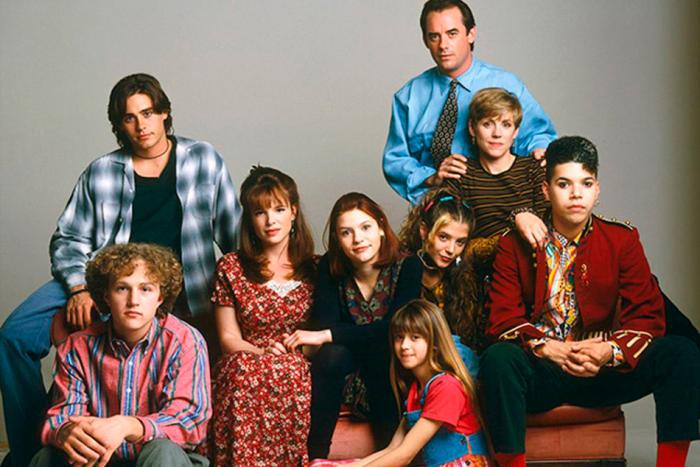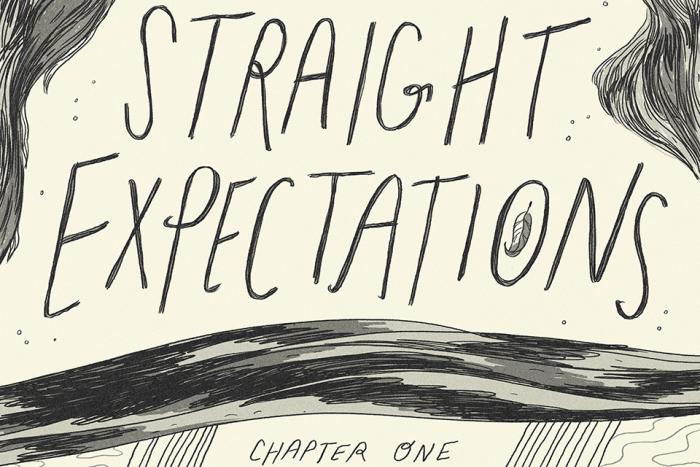The other day, my friend sent me the following text:
What’s the greatest American band of all time?
My friend and I ask each other these sorts of questions often—not necessarily in search of answers as much as in an effort to try to determine the lens through which one must view the problem in order to (hypothetically) solve it. So, before we get to my actual answer (which is Metallica), let’s take a look at the two ways in which we as a culture measure a band’s greatness.
The first is reach—as in, how many people are aware of this band? The second is the sheer quality of that band’s music. These two measuring sticks of genius are, of course, by no means mutually exclusive—consider the Beatles, or Prince, or Stevie Wonder, or the Rolling Stones. As well, as the years pass, a band’s place on this spectrum can undergo massive change: Maybe the critics come around to the populist juggernaut, as they did with Led Zeppelin, or, as with Gary Wilson’s You Think You Really Know Me, some record everyone dismisses as amateurish and unlistenable gets discovered by a generation of weirdos who love how amateurish and unlistenable it is.
But there is only one American band brave enough to defy these conventions so hard that they shatter them, and that band is Metallica. They treat this art/commerce continuum like James T. Kirk treated the Kobayashi Maru. They laugh in its face; they crap in a paper bag, light it on fire, and leave it flaming on the doorstep as they ride their metaphorical skateboards away, cackling with impish glee.
Metallica began its career by making four records—Kill ‘Em All, Ride the Lightning, Master of Puppets, and ...And Justice for All—that are the foundation upon which thrash metal was chaotically wrought. Much like the Beatles, Metallica showed up to the party, changed music forever, then suddenly left without so much as a goodbye. Not by imploding like the Beatles did, but by making the conscious decision to actively and enthusiastically sell out and make populist, semi-generic hard rock albums that sold like hotcakes.
And because of this, their fans really, really fucking hate them.
They initially tried to call their first record Metal Up Your Ass—the artwork, naturally, was to feature a disembodied, knife-wielding hand protruding from a toilet—before eventually settling on the more family-friendly title Kill ‘Em All.
A little history, just to illustrate the sort of people we’re dealing with here: Metallica began when drummer Lars Ulrich met guitarist/singer/dirtbag James Hetfield in Los Angeles. Ulrich was a Danish rich kid who looked like an elf and was trying to follow in his famous father’s footsteps and make it as a professional tennis player; Hetfield was a fatherless loner who worked in a sticker factory and wrote in his high school yearbook that his life goal was, “Make music. Get rich.”11All of this information in this sentence about Hetfield is available in Mick Wall’s Metallica biography Enter Night, on pages 36 and 42, specifically. Once their lineup cohered with bassist Cliff Burton and guitarist Kirk Hammett, the band set about recording an album full of musically ambitious, virtuosically played songs brimming with speed, raw energy, and exuberance. Most of Hetfield’s lyrics were either about beating the shit out of wizards, how hard it ruled to be in or around Metallica, and in the case of “Phantom Lord” and “Metal Militia,” both of these things simultaneously. They initially tried to call the record Metal Up Your Ass—the artwork, naturally, was to feature a disembodied, knife-wielding hand protruding from a toilet—before eventually settling on the more family-friendly title Kill ‘Em All.
In those early days, with every subsequent album, Metallica’s music became more punishing, more violent, more unthinkably complex than the record that came before it. They were insular, escapist fantasies for rageful losers for whom life was nothing but one long high school hallway, populated by an endless succession of jocks shoving you into one locker after another. These were the people that Metallica—Hetfield in particular—had once been, and in 1989, when the band’s music video for “One” hit MTV, Metallica fans must have felt the same mix of optimism all the Bernie Sanders people felt once it seemed like the decrepit Democratic Socialist from Vermont actually had a shot at beating Hillary Clinton.
It has long been enshrined in the annals and/or dungeons of metal history that Good Metallica did not give a fuck about anything or anyone, including whichever members of Metallica Ulrich and Hetfield deemed nonessential. They mooched off their original bassist Ron McGovney while actively courting Burton as a replacement behind his back, then passive-aggressively convinced McGovney to quit by electrocuting his instrument with beer. They fired their original lead guitarist, a lunatic boozehound drug dealer named Dave Mustaine, after a rift that began when he punched Hetfield in the face for kicking his dog, and ended when he woke up the day after a show with the rest of the band standing in front of him holding a cross-country bus ticket in his face. They’d later use four of Mustaine’s compositions on Kill ‘Em All, while Mustaine would go on to form Megadeth, partially out of a desire for revenge.22For further reading on the Mustaine/Metallica rivalry, please refer to Mustaine’s breezy, egomaniacal, and aptly titled memoir Mustaine: A Heavy Metal Memoir, in which he writes about these indignities the way a supervillain might write about getting kicked out of the Justice League. After Burton was killed in a tragic 1986 bus accident, Metallica spent the next two years drunkenly torturing their new bassist Jason Newsted by tossing his shit out of hotel windows and telling people he was gay behind his back. Such was their myopic dedication to hazing their new bassist simply for not being their old bassist that they ordered the engineer on 1988’s ...And Justice for All to turn Newsted’s playing all the way down in the mix. This was a bizarre, disrespectful decision that could have potentially undermined their own record, but they did it anyway, because as we have established, part of what made Good Metallica so great is that truly gave no fucks.
But in July of 1991, Metallica wriggled out of their old selves like a pack of molting cicadas. They released “Enter Sandman,” an inescapable non-thrash smash and still a favorite among people in charge of picking the warm-up music for high school football games. Their diamond-selling self-titled album (often referred to as The Black Album) soon followed, officially ushering in the second era of Metallica, which can be referred to interchangeably as “Post-Good Metallica” and simply “Bad Metallica.” The Black Album was, well, extremely easy to listen to. It was hook-laden heavy-ish pop rock that seemed designed in a laboratory to appeal to as many people as possible, and couldn’t have been further from Justice’s insular and intricate thrash.
In the decade or so after The Black Album, it began to seem like Metallica had moved on from hazing their new bassist—you could, after all, actually hear his instrument this time around—to directly hazing their fans.
In metal, massive stylistic shifts are relatively common. The Black Sabbath of the ’70s sounds nothing like the Sabbath of the ’80s; KISS has sounded like at least four (all bad, all fun) bands; Pantera was originally a semi-generic glam metal band before they were PANTERA: HORSEMEN OF THE KICKASSOLYPSE, etc. So contextually, Metallica shooting for a new, stadium-sized sound was not completely unexpected. But in the decade or so after The Black Album, it began to seem like Metallica had moved on from hazing their new bassist—you could, after all, actually hear his instrument this time around—to directly hazing their fans.
First, Metallica cut off their long hair, which a sizable portion of the band’s fan-base viewed as high treason. (If you’re having a hard time wrapping your head around why this is a big deal, think Sontag’s “The mask is the face,” except in this case, the hair is the guitar.) The haircuts precipitated Metallica’s 1996 record Load, the cover art for which featured a close-up on a mixture of cow blood and human semen, and which was a sonic mixture of Southern butt-rock and performative malaise that fans found even less appealing. Just for good measure, Metallica followed Load up with a sequel titled Reload just one year later, then in 1999 put lots of the songs their fans already hated onto S&M, a live album they recorded with the San Francisco Symphony Orchestra. In 2000, they toured with Kid Rock—who has always been Post-Good—and even had him fill in as their lead singer a few times. 2000 was also the year they sued their fans for illegally downloading their music on Napster.33In actuality, they sued Napster itself, but given all the crap they’d spent the past decade putting them through it felt like the lawsuit was yet another way to directly antagonize their fans. It didn’t help that this was also around the time that Lars Ulrich told Playboy, “If you stop being a Metallica fan because I won’t give you my music for free, then fuck you.” Shortly thereafter, they made a song with Ja Rule and Swizz Beatz which, instead of appealing to both a rap audience and a rock audience, appealed to absolutely no one. They capped off this historic run with St. Anger, their 2003 record that sounded like what would happen if Tony Robbins made a nu-metal album about sobriety which contained zero guitar solos and drums that sounded like trash cans.
All of this adds up to one thing, and one thing only: the conclusion, among millions of people, that Metallica went from a band that rocked ass to a band that sucked ass. This is not, strictly speaking, about the actual quality of Post-Good Metallica’s output. Instead, it has more to do with the perception that Metallica started sucking, which at this point is so widely believed that it has basically become true.
The funny thing is, though, I get the sense that Metallica fans wouldn’t view the band’s early material with such reverence if the band hadn’t started systematically alienating the people who got them to the top. When it comes to fandom at least, hate is a far stronger emotion than love, and it seems like the further Metallica has drifted from its roots, the more incredulous the world has become that this group of sell-outs and lame-os could have once made such perfect, untouchable music. This relationship works in reverse as well: If the first four Metallica albums hadn’t been so great, it wouldn’t be so fun to hate on every move the band has made since then.
For an artist to truly succeed, they must either be uncompromising in their vision or uncompromising in how much they’re willing to compromise that vision.
I have no doubt that history will one day be kind to Post-Good Metallica, for I have already begun the process. And besides: a fair portion of Post-Good Metallica’s material is… actually pretty good? St. Anger in particular is a fascinating album, especially when you listen to it directly after watching Some Kind of Monster, the documentary that ostensibly captured the record’s creation but is more accurately a portrait of the band as they slowly realize that even they think they suck, and the very strange therapy sessions that occur therein. And if you chop down Load and Reload into a single, sixty-minute disc, you’re left with one of the last genuinely great hard rock records of the ’90s,44For the record: “Ain’t My Bitch”; “Attitude”; “Hero of the Day”; “Mama Said”; “Until It Sleeps”; “The Unforgiven II”; “Fixxxer”; “Bleeding Me”; “Devil’s Dance”; and “The Outlaw Torn.” Call it Unload, then tack on “Fuel” as a bonus track for good measure. right before all the wimpy indie rockers, dance-punks, and wannabe Lou Reeds would go on to hog all the cred in the realm of guitar music. Speaking of Lou Reed, even Lulu, Metallica’s collaborative trainwreck with the real Lou Reed, is better than people think it is, if only for the sheer novelty of listening to Lou Reed recite sexually explicit slam poetry over thrash riffs (not to mention the genuinely great closer “Junior Dad” and the genuinely good “Cheat on Me”).
We’ve already seen Good Metallica expand its audience beyond its original cult of longhairs and outcasts: each of those early records has since gone Platinum and become so culturally ubiquitous that you can buy a Ride the Lightning hoodie at Urban Outfitters. And as more and more lame-asses and false metal fans (including, I guess, me) start getting into Good Metallica, perhaps it is only inevitable that the devout will react by embracing Bad Metallica, and all the things so eminently hateable about that version of the band—the haircuts, the drum sounds, the Ja Rule—will cease to be fuel for the anti-Metallica fire, and instead tests of true loyalty to the cause.
For an artist to truly succeed, they must either be uncompromising in their vision or uncompromising in how much they’re willing to compromise that vision. But as time passes and history separates us from context, it becomes the listener’s responsibility to decide what those compromises actually were, and what turned out to be the plan all along.






